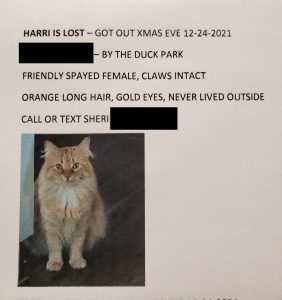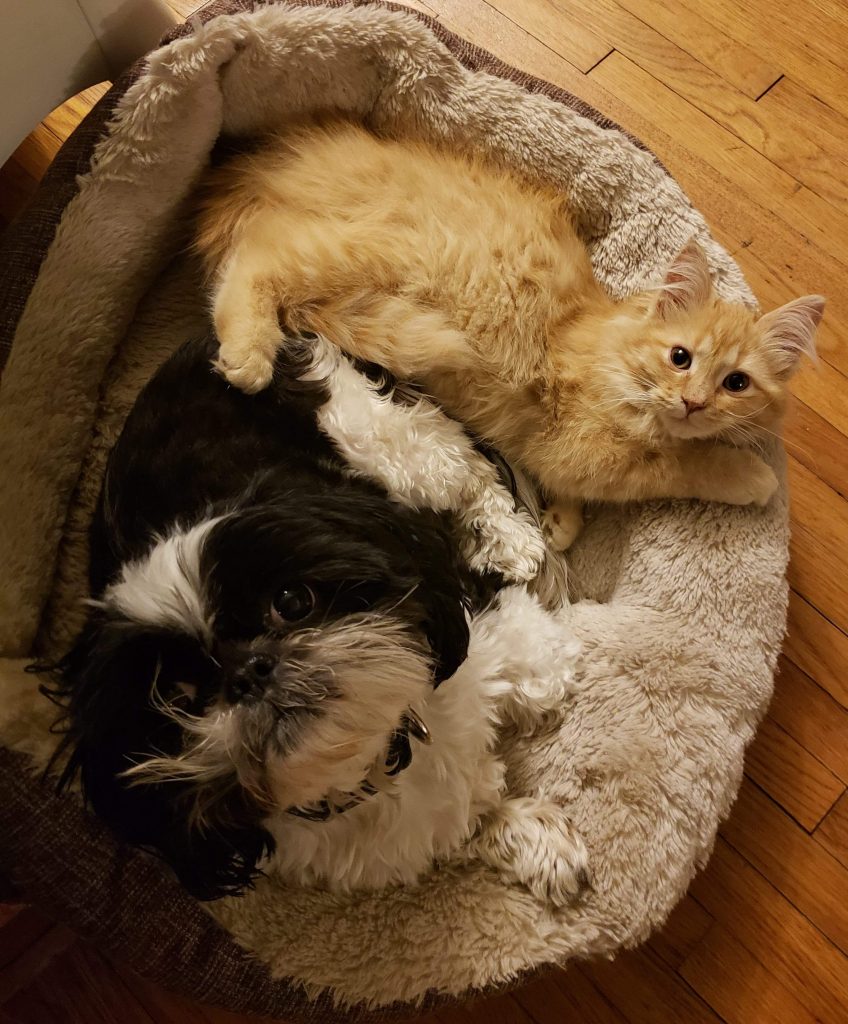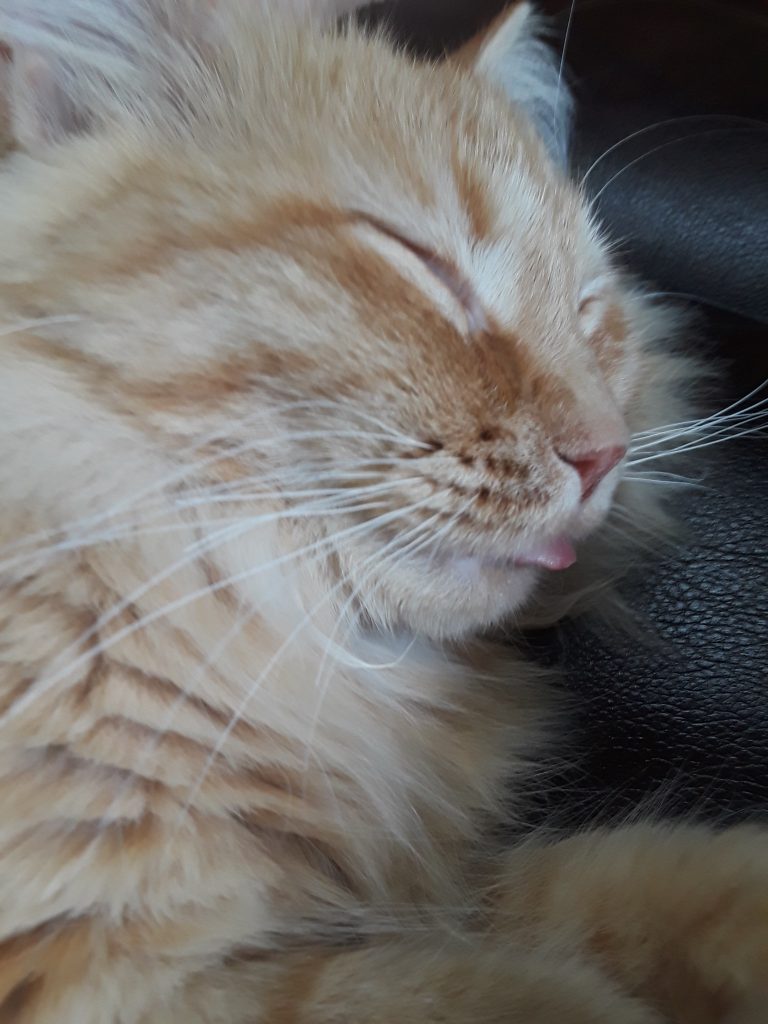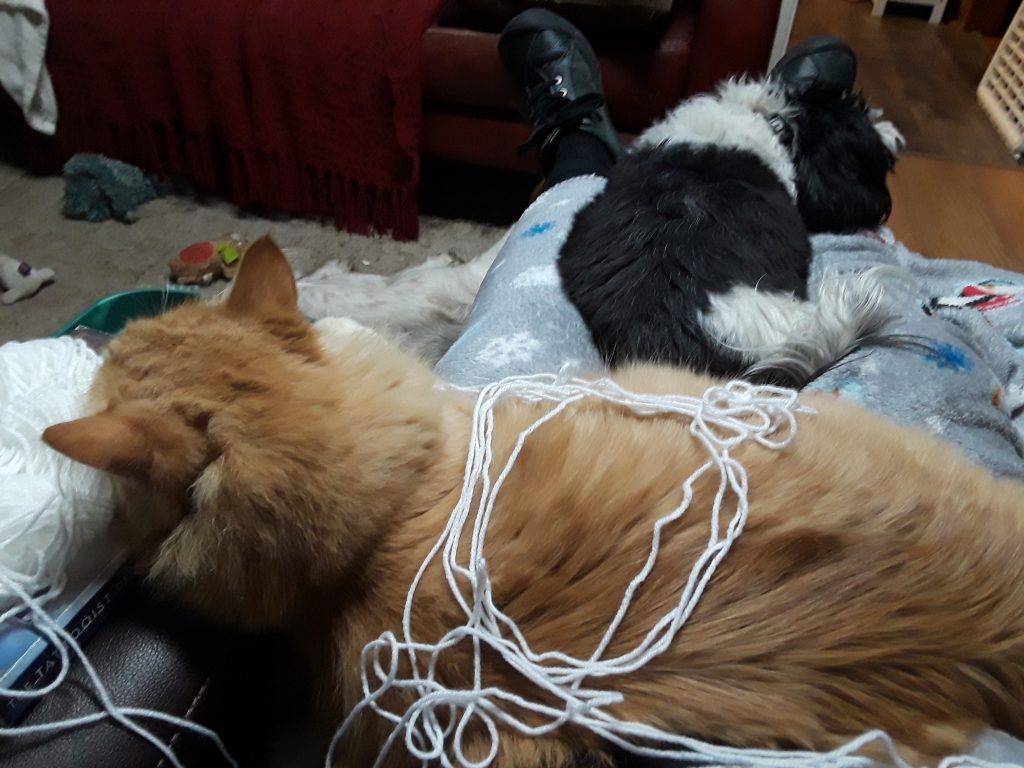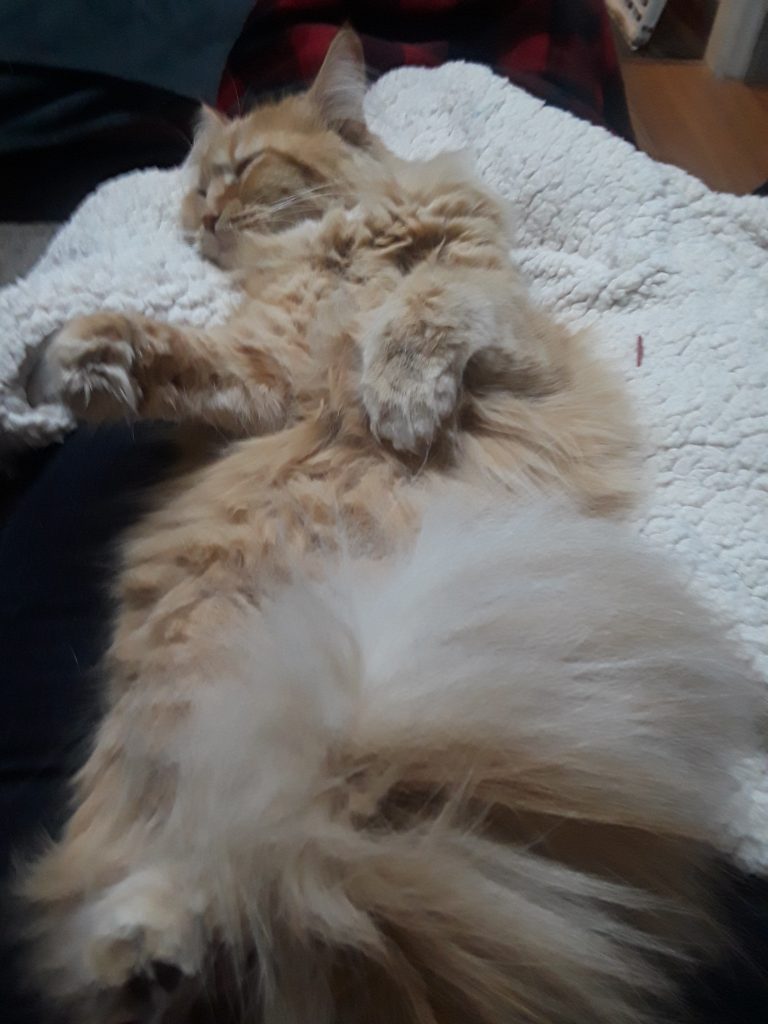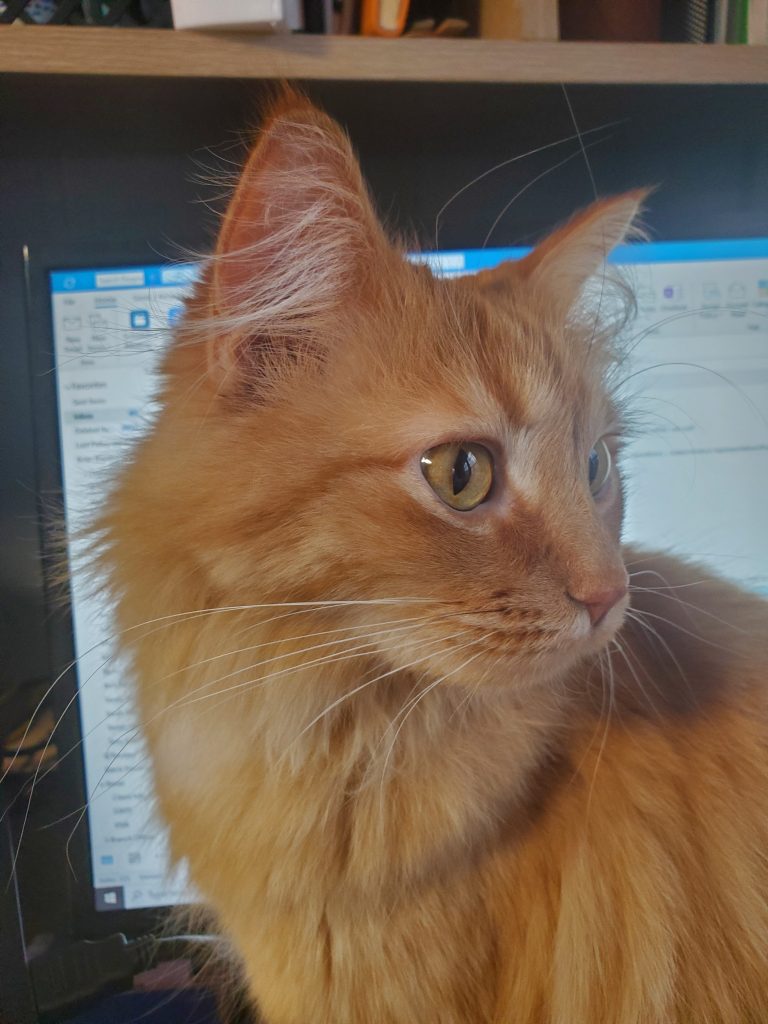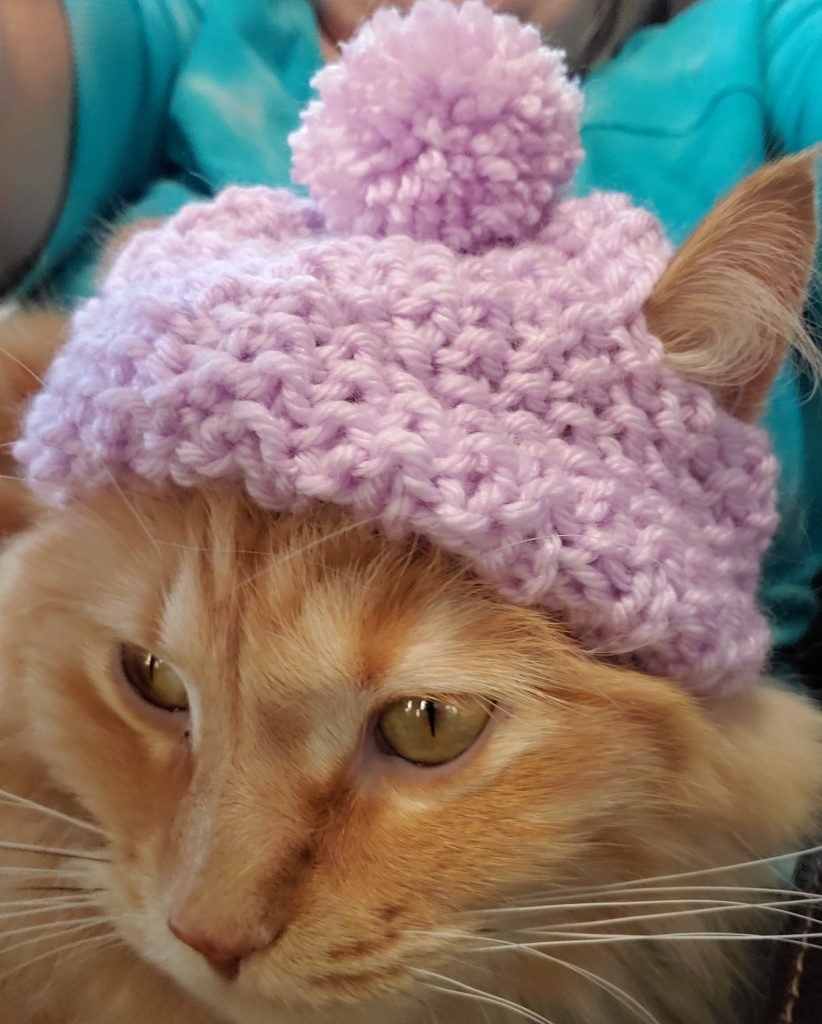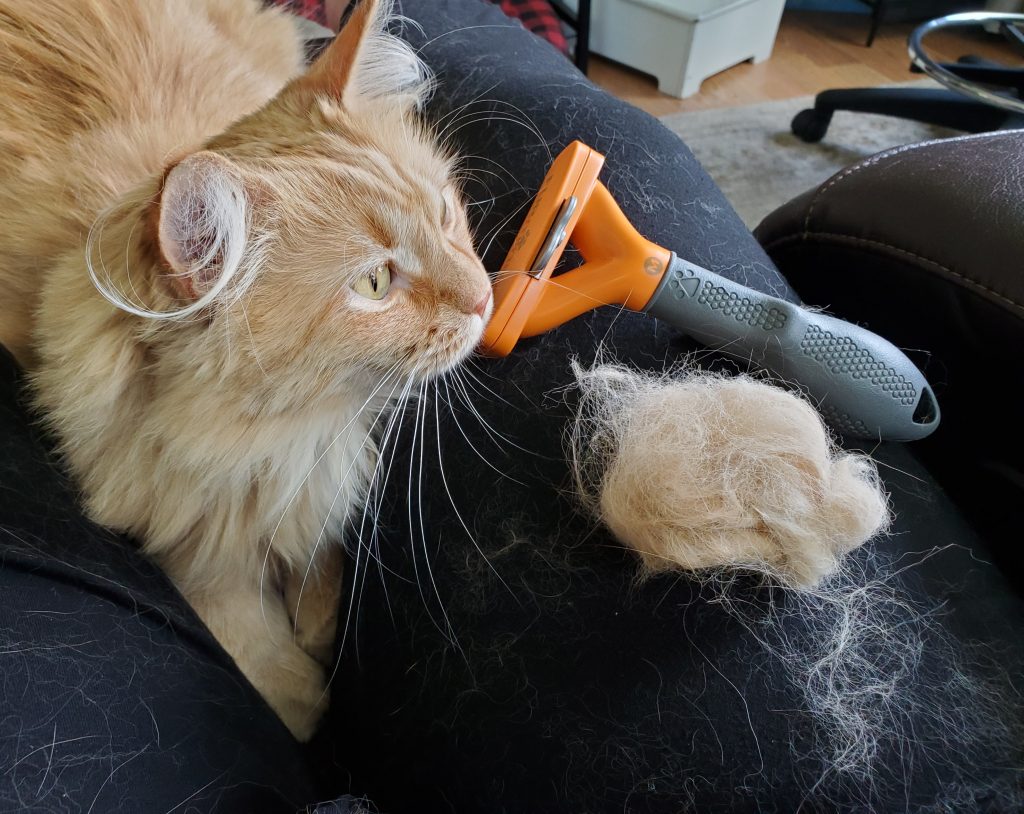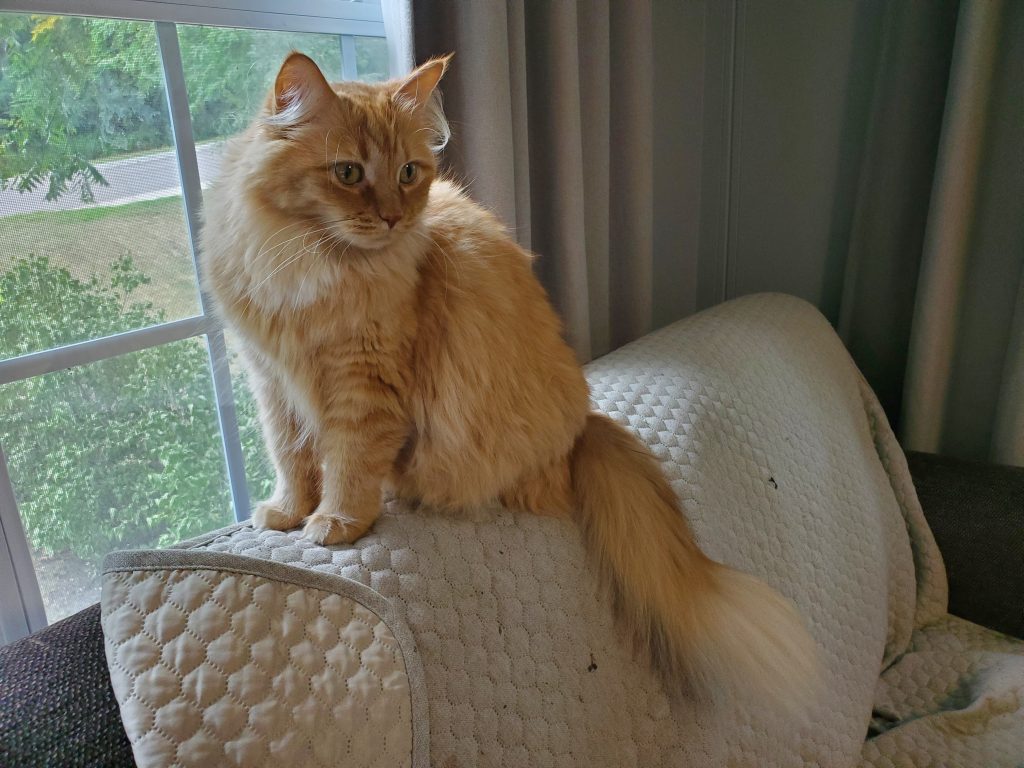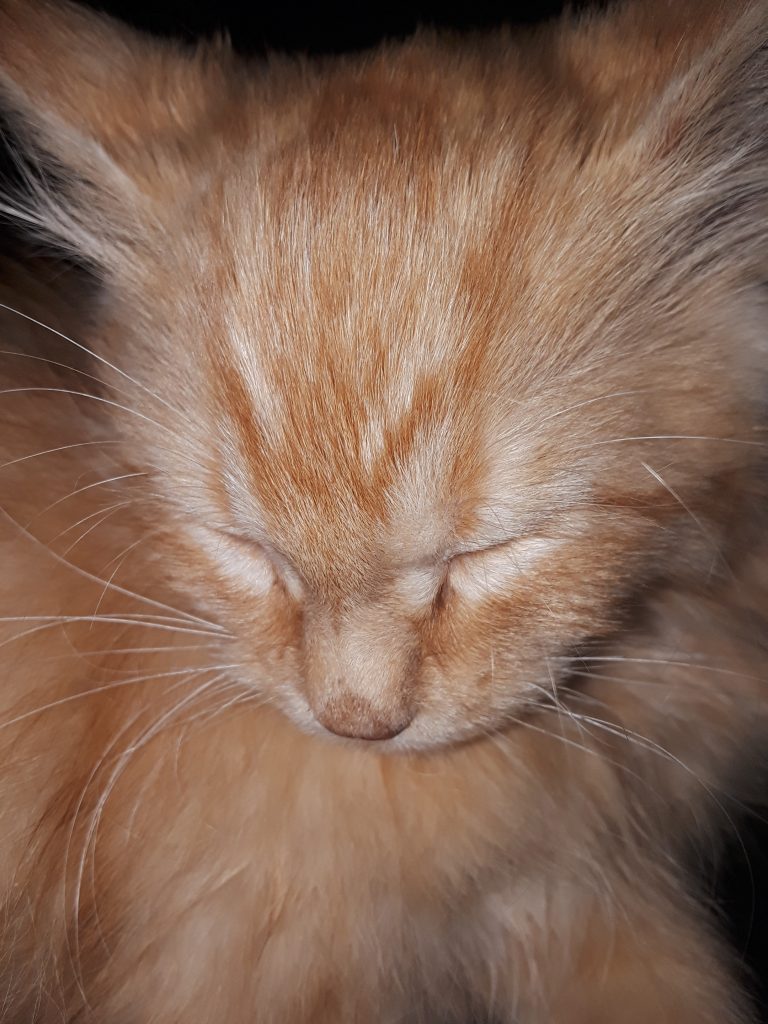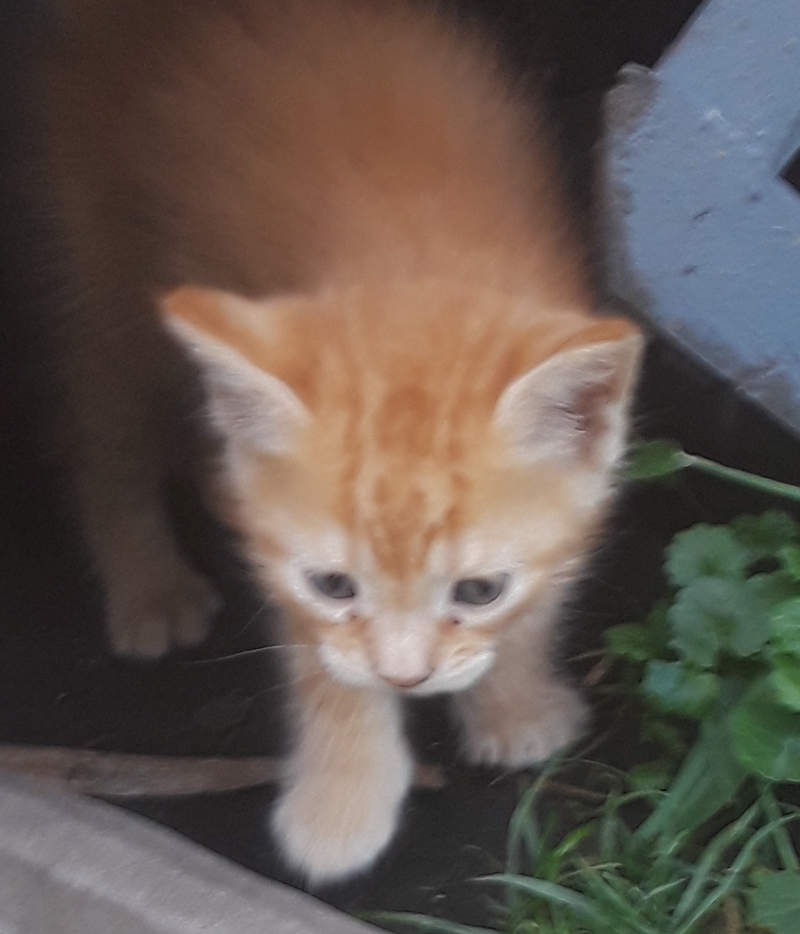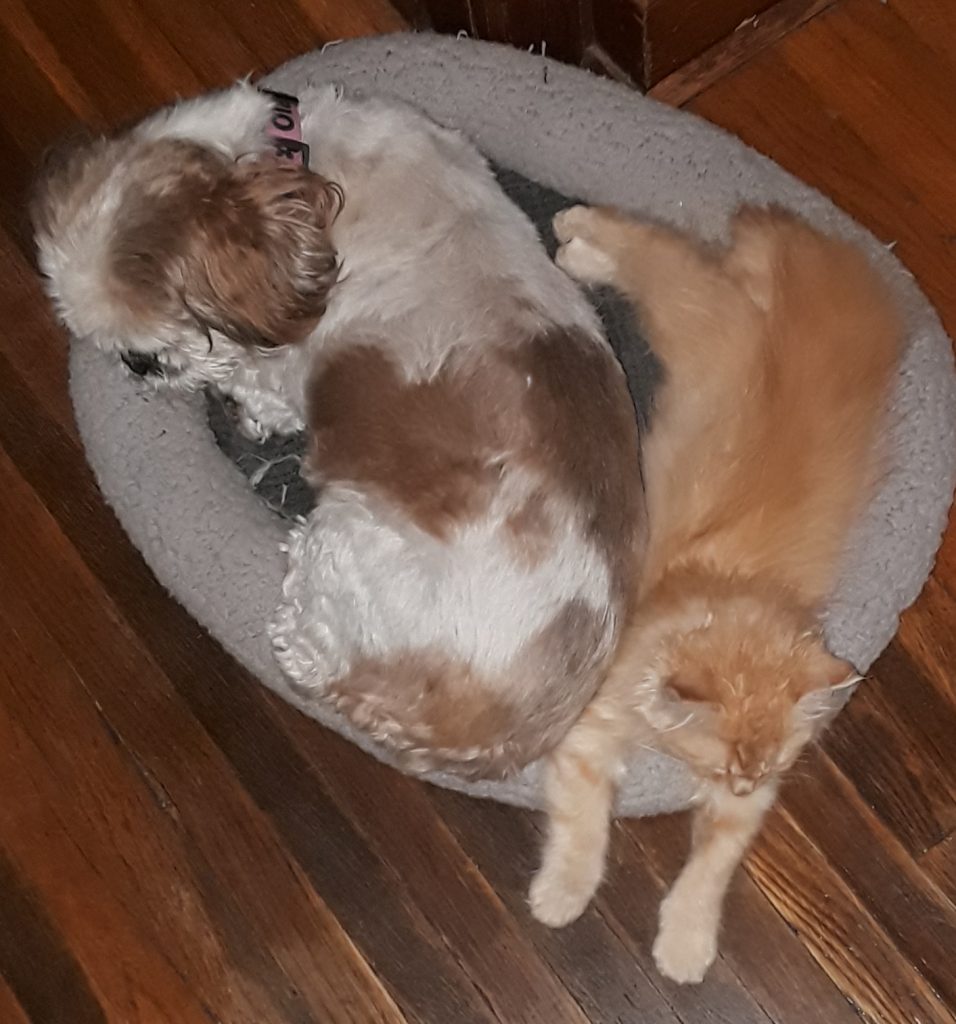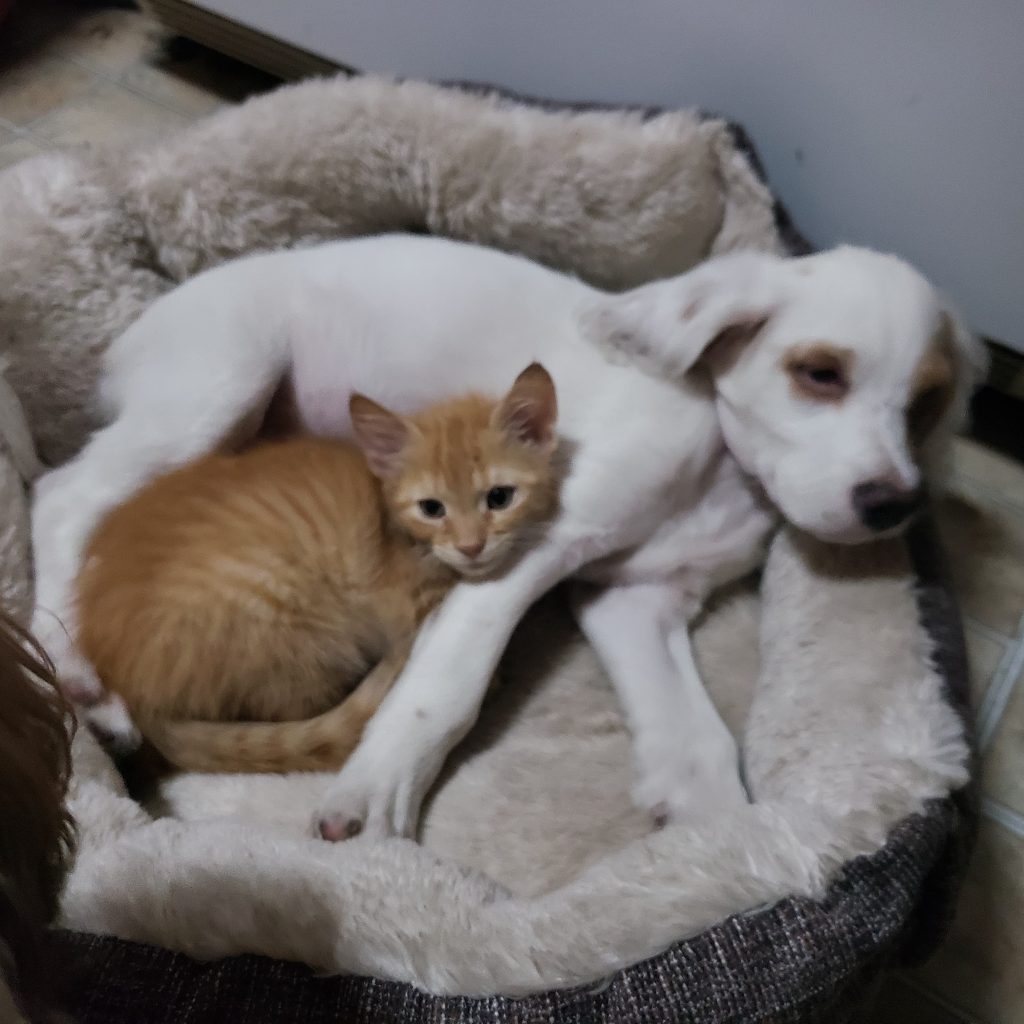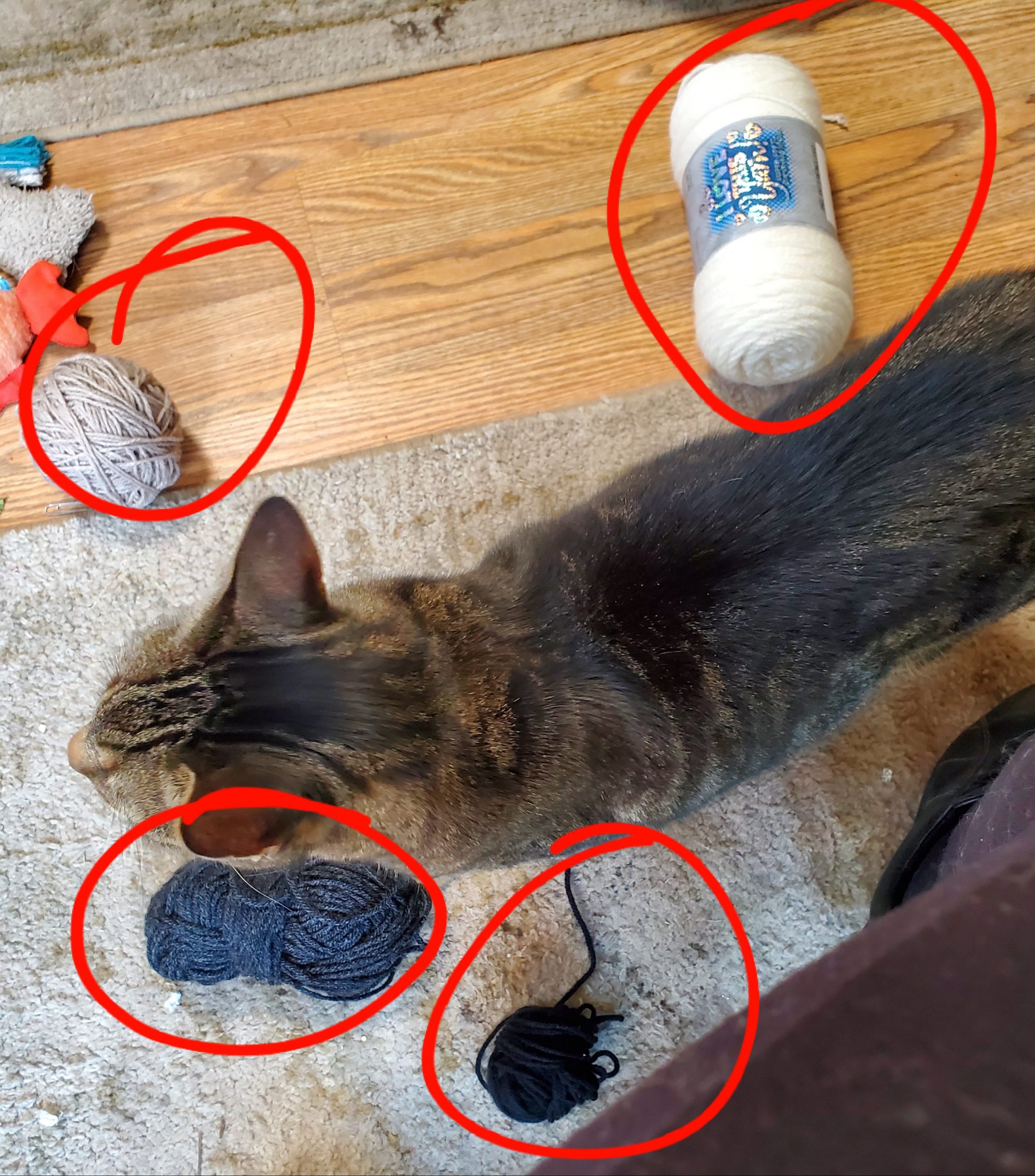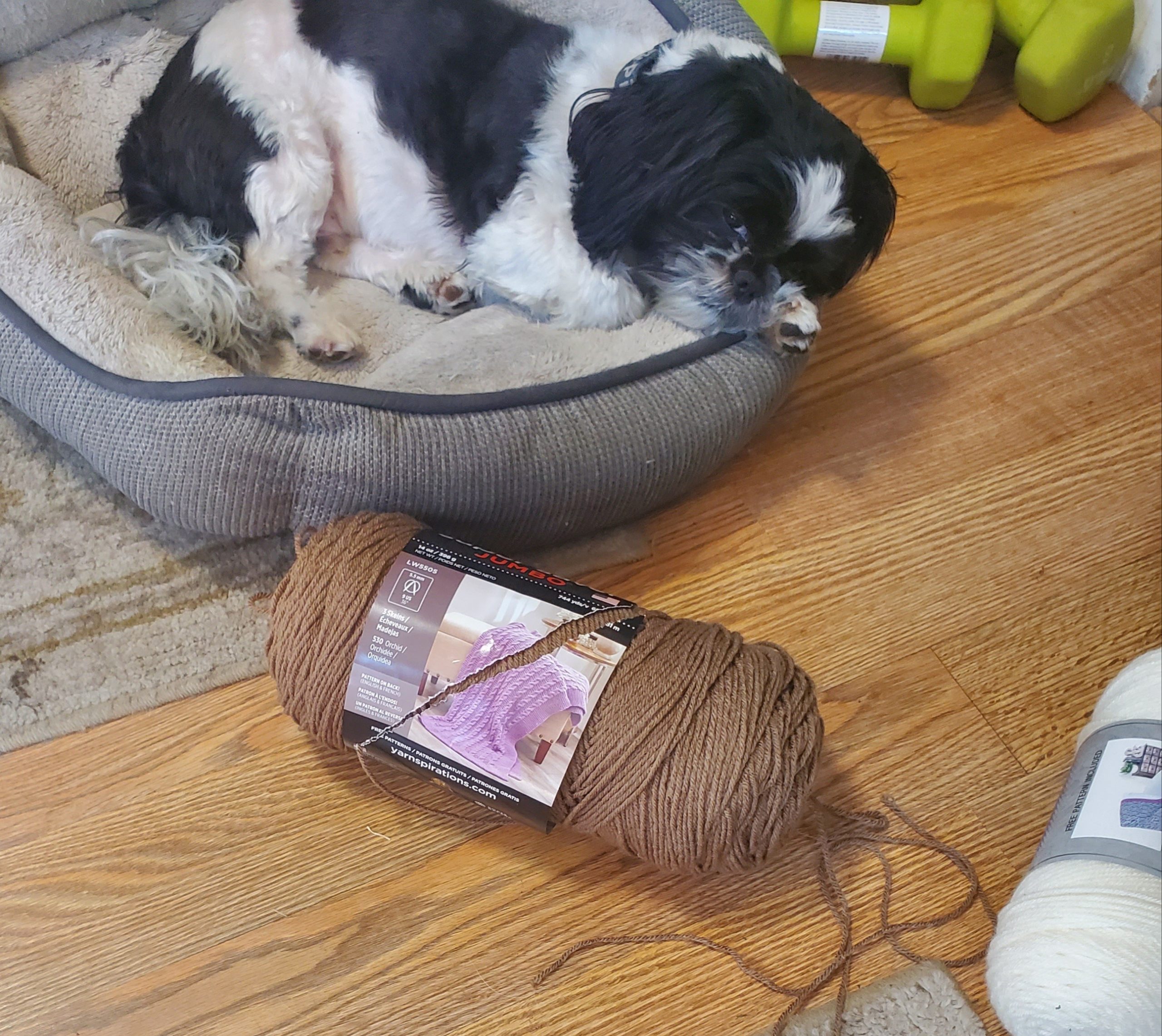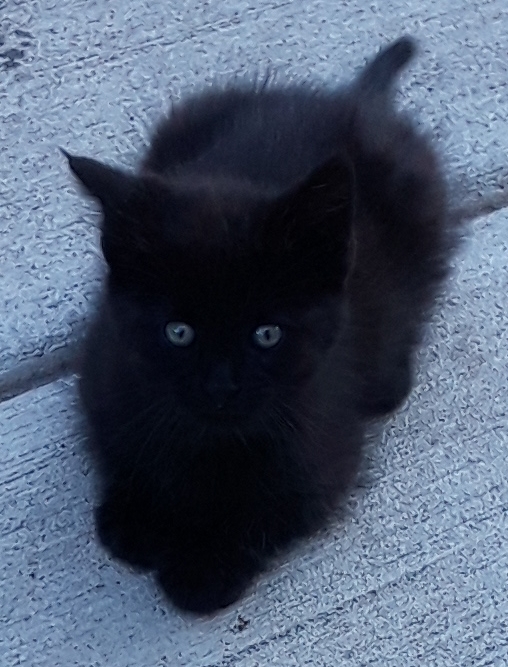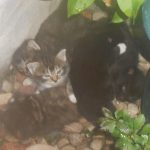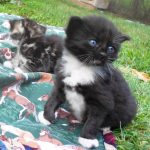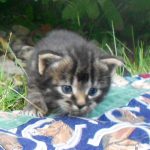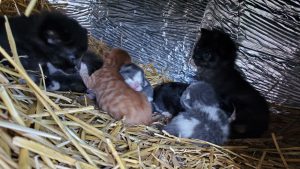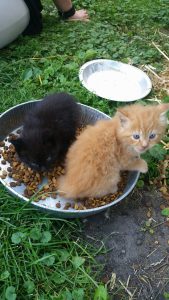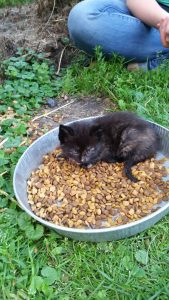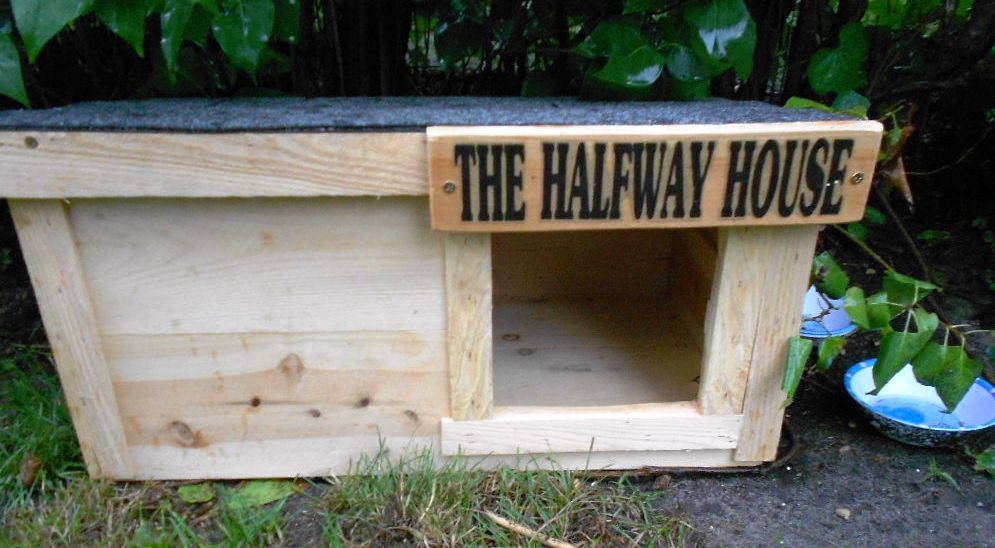
I am a Customer Operations Manager by day, and a Crazy Cat Lady in my off time. I live in a modest house, in a small town, close to the river. We have songbirds, eagles, rabbits, weasels, groundhogs, deer, coyotes, opossums, and cats. We live in harmony with the city-limits wildlife and they cause us no harm.
Though I have been feeding the feral cats for years, we recently ended the spring kitten explosion. Two years ago, a local rescue helped me trap, vaccinate, spay and release the 6 females in my colony. Since then, we still see four of the ‘Old Maids’ and have lost track of two of them. They come and go and we continue to feed them. They are healthy and tame enough for petting.
This morning, I had to confront the feral cat problem that I don’t see anymore. As I was dressed for work and in a hurry to lead an important meeting, I stopped out to feed the cats. There, in front of The Halfway House was a small tiger cat laying on the ground. It looked dead. On closer inspection it was a small, intact male who was emaciated and missing a leg. He was breathing. He was in very bad condition and suffering. I figured he could not survive and at 6:00 am I didn’t have many options to help him.
Fortunately, my cat rescue contact came thru and helped this guy out of his misery. She called for help and a very kind police officer picked him up and brought him to the local vet where he was humanely euthanized. I paid the bill and talked with the vet. The missing leg was healed over, so this cat had been living with an injury for a while. He was very sick with liver and kidney issues. He was starving and dehydrated. It takes a long time for an animal to get into this condition and they feel pain and suffering just as we do.
For 20 years I captured kittens and rehomed them. One year I trapped, neutered, and released (TNR) six female feral cats. For two years after that, there were no kittens. I know that TNR works. I know the cats are there whether we feed them or not. If we do feed them, they leave the songbirds alone and are less likely to carry disease.
Please spay and neuter your pet cats. Vaccinate them, and keep them indoors. If you notice feral cats around your property, call a local rescue to help get them TNR so they stop having kittens and we can decrease the feral cat population. Consider donating to local rescues so they can continue this work that benefits all of us.



